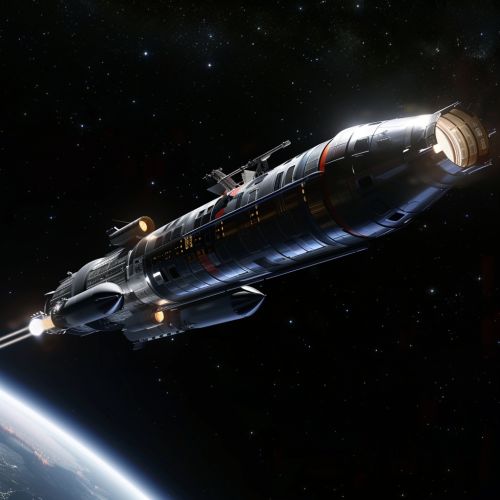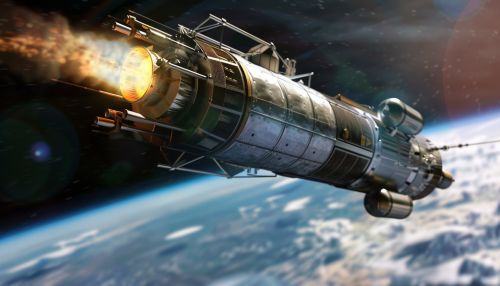Nuclear Propulsion
Introduction
Nuclear propulsion involves the use of nuclear reactions to generate thrust in spacecraft and submarines. This technology offers several advantages over traditional chemical propulsion methods, including higher efficiency and the potential for long-duration, deep-space missions. However, it also presents significant technical and regulatory challenges.
Principles of Nuclear Propulsion
Nuclear propulsion operates on the principle of nuclear fission or nuclear fusion. In a fission-based system, a nuclear reactor generates heat by splitting atoms. This heat is then used to produce steam, which drives a turbine connected to a propeller or a rocket engine. In a fusion-based system, two lighter atomic nuclei combine to form a heavier nucleus, releasing energy in the process. This energy can be harnessed to produce thrust.
History of Nuclear Propulsion
The concept of nuclear propulsion dates back to the early 20th century, with the first practical designs emerging in the 1950s and 1960s. The Project Orion, for instance, proposed the use of nuclear pulse propulsion for interstellar travel. However, the project was cancelled due to concerns about radiation and the Partial Test Ban Treaty of 1963, which prohibited all test detonations of nuclear weapons except for those conducted underground.
Types of Nuclear Propulsion
There are several types of nuclear propulsion, each with its own advantages and disadvantages.
Nuclear Thermal Propulsion (NTP)
Nuclear Thermal Propulsion (NTP) involves the use of a nuclear reactor to heat a propellant, usually hydrogen, to high temperatures. The hot propellant is then expelled through a nozzle to generate thrust. NTP offers a higher specific impulse (a measure of propellant efficiency) than chemical rockets, making it a promising technology for future Mars missions.
Nuclear Electric Propulsion (NEP)
Nuclear Electric Propulsion (NEP) uses a nuclear reactor to generate electricity, which is then used to power an electric propulsion system. NEP systems offer even higher specific impulse than NTP, but they also require large, heavy radiators to dissipate the heat produced by the reactor.
Nuclear Pulse Propulsion (NPP)
Nuclear Pulse Propulsion (NPP) involves the detonation of a series of nuclear explosives behind a spacecraft, with the resulting shock waves providing thrust. This concept was explored in Project Orion, but it has not been pursued due to the aforementioned concerns about radiation and the Partial Test Ban Treaty.
Challenges and Concerns
Despite its potential benefits, nuclear propulsion faces several challenges and concerns. These include the technical difficulties of designing a safe and efficient nuclear propulsion system, the risk of nuclear accidents, and the potential for the technology to be used for military purposes. There are also regulatory hurdles, as the use of nuclear power in space is subject to international treaties and regulations.
Future Prospects
Despite these challenges, there is renewed interest in nuclear propulsion for space exploration. NASA, for instance, is currently developing a Nuclear Thermal Propulsion system for future Mars missions. Other organizations and companies are also exploring the use of nuclear power for deep-space exploration.
See Also


